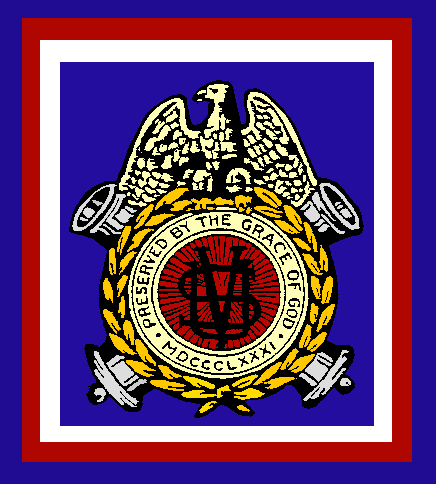
Sons of Union Veterans of the Civil War
Westport Camp # 64
Kansas City, Missouri

Battle of Westport
October 21-23, 1864
The Battle of Westport, sometimes referred to as the "Gettysburg of Missouri," was fought on October 23, 1864, in present-day Kansas City, Missouri, during the American Civil War. U.S. Army forces under Major General Samuel R. Curtis decisively defeated an outnumbered Confederate Army force under Major General Sterling Price. The conflict was the turning point of Price's Missouri Expedition and helped force his army to retreat.
Westport (which is now within the boundaries of present-day Kansas City) was already a historic city by the time Union and Confederate forces clashed there in 1864. Pioneers traveling along the Oregon, California and Santa Fe Trails had all passed through this town on their way West via Wakarusa watershed ridgelines.
In September of 1864, Sterling Price led his Army of Missouri into Missouri. Major General William S. Rosecrans, commanding the Federal Department of the Missouri, began assembling troops to repel the invasion. Rosecrans's cavalry, under Major General Alfred Pleasonton, was in pursuit of Price with a large detachment of infantry from the Army of the Tennessee under Andrew J. Smith. Finding St. Louis too heavily fortified, Price moved further west to threaten Jefferson City. After light skirmishing, Price again decided his target was too heavily fortified and moved west once again towards Fort Leavenworth.
Major General Samuel R. Curtis, commander of the Federal Department of Kansas, now faced the threat of Price's army moving into his department. Curtis assembled the troops of his department into the Army of the Border. James G. Blunt was recalled from Indian campaigns to lead the 1st Division composed mostly of volunteers regiments and some Kansas militia. George Dietzler, overall commander of the state militia organized the rest of the militia regiments into a second division.
Curtis placed Blunt's division in a defensive position along Brush Creek with Dietzler's militia on the right flank. Price hoped to defeat Curtis's main force before Pleasonton joined him. He planned to strike Blunt's division with Shelby and Fagan while Marmaduke was to guard Byram's Ford across the Blue River to prevent Pleasonton from joining Curtis. At dawn on October 23, Price attacked and drove back the Union forces. Curtis counter-attacked and drove the Confederates back across Brush Creek. For four hours the fighting see-sawed back and forth across Brush Creek. Finally a brigade under Col. Thomas Moonlight found its way through a small ravine and hit Price's exposed left flank. The Confederates fell back to a new defensive line, with Curtis now taking the offensive. At this time Pleasonton arrived and routed Marmaduke's force at Byram's Ford. Another Union cavalry force had been sent south to attack Price's rear guard. The Union army was converging on three sides and Price was forced to retreat.
The Battle of Westport was one of the largest battles west of the Mississippi River, with over 30,000 troops involved and roughly 1,500 casualties on each side. The Union victory put an end to Price's threat to Missouri. The greatly contested border state of Missouri was now firmly in Union control. Price continued to fight mostly rear guard actions on his retreat to Arkansas, where his expedition officially ended November 1, 1864. This was the last campaign in the Trans-Mississippi Theater and the last major Confederate threat to any northern state.
A memorial walking tour of battle sites exists throughout Kansas City. The main memorial for the battle is located at the main battlefield in the Sunset Hill neighborhood just south of the Country Club Plaza, comprising present-day Loose Park and a portion of what is now the lower campus of The Pembroke Hill School.
